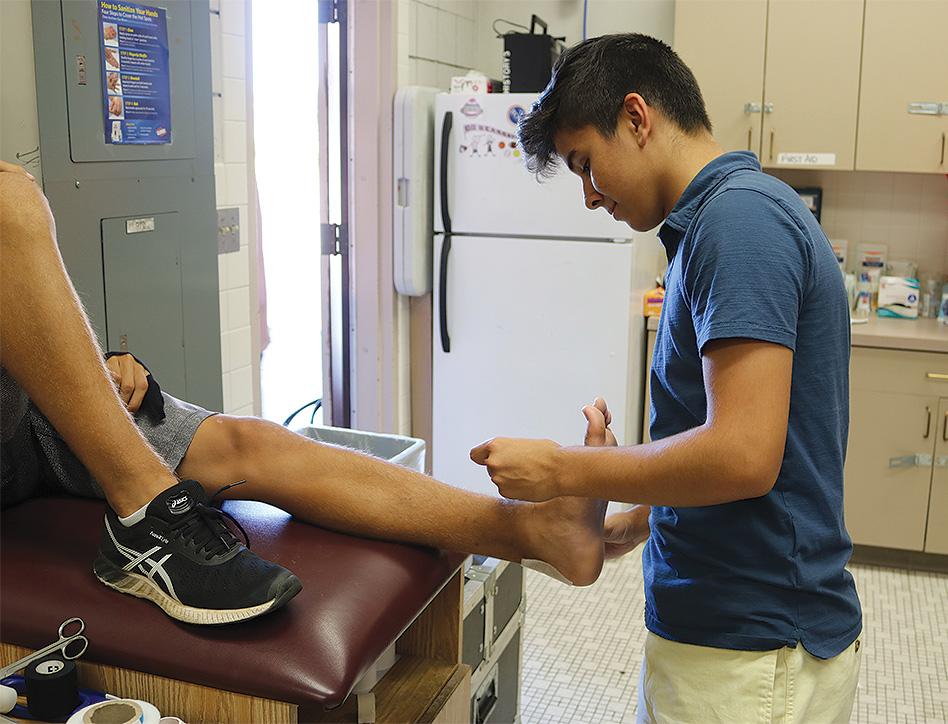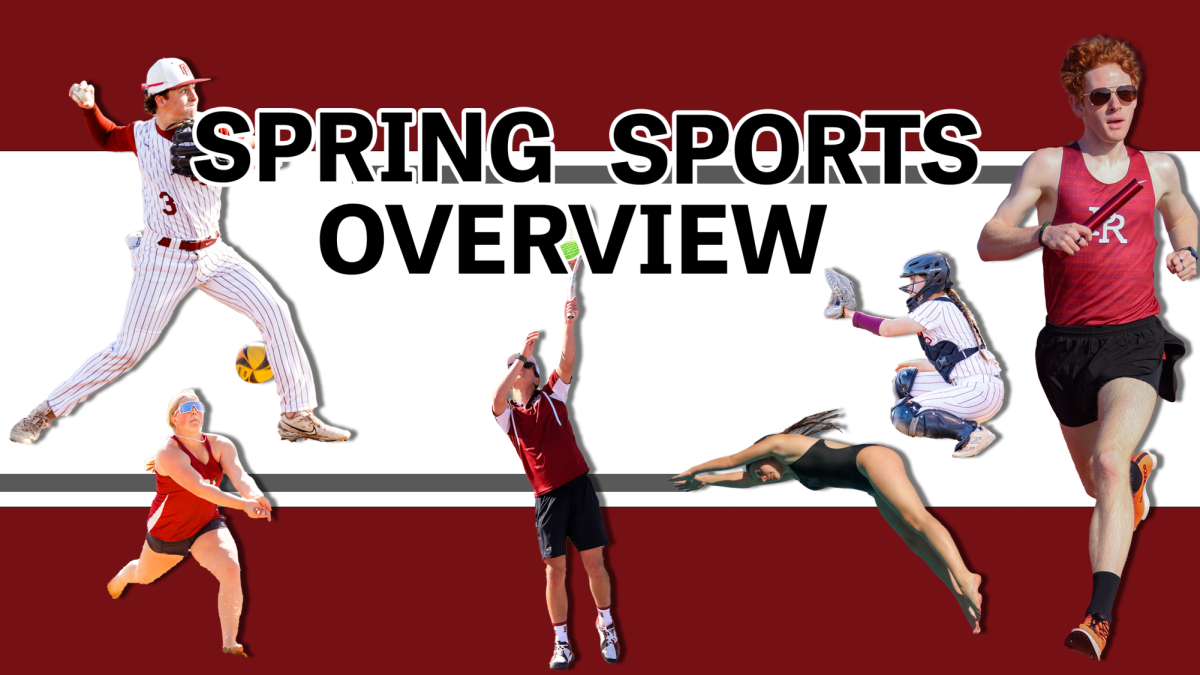Staff and students of PRHS Athletic Training experience changes to their class
Although the students and staff of the Athletic Training class don’t perform in the glamour of a cheering audience, PRHS athletes can attest that these medical providers deserve just as much recognition for their hard work. Instead of springing over hurdles or launching footballs into flight, the Athletic Training team members put their skills to work in the form of sports medicine such as wrapping sprains, identifying concussions, and measuring blood pressure.

With the fresh leaders Maria Curtis as the new Athletic Trainer, and Shelby LaMendola as the, new Athletic Training class teacher, this class intends to be an integral contributor to the success of the sports program.
In the class of 16 students, work is done in two locations; Classroom 1019 where students learn technical skills such as taking physical reports of a patient, and at a healthcare site, where they practice hand-on sports medicine training. The latter location’s activities often include nursing minor injuries or demonstrating physical therapy exercises. Students will travel to the Athletic Training room located on campus, now supervised by Curtis, the new Head Athletic Trainer. For the healthcare students mixed in the class, time will often be spent visiting local hospitals off campus instead.
Junior Madison Harris, president of the Student Athletic Training Organization, describes the Athletic Training class as a benefit to both students and athletes.
“In Athletic Training, the whole idea of it is injury prevention for student athletes… It’s like physical therapy at the high school,” said Harris, who plans to use the knowledge she gained from the class to receive a bachelor’s degree for Kinesiology or Biomedical Engineering.

Coming into the 2016-17 school year on August 22, the students and staff of the Athletic Training class experienced numerous changes to their teachers and schedule. Due to a sudden change in the prior Athletic Trainer’s resignation date, Curtis jumped into her current job position on September 2, a Friday, having just moved from Port Hueneme in the Ventura County the morning before.
According to Curtis, PRHS is a rewarding environment to work in. “The first thing that you notice is the stronghold of the community.” she said. “Everywhere you go, it says, ‘Once a Bearcat, always a Bearcat.’ You can just tell how strong the community is based off that.”
LaMendola, the new Athletic Training Practicum class teacher, also admits to experiencing a culture shock from transferring to PRHS. Having spent the last eight years working as an Athletic Trainer for Templeton High School, La Mendola is adjusting to the 171 percent increase in student body, with PRHS holding 1,242 more enrolled students than Templeton. However, LaMendola agrees with Curtis’ analysis of the community feel.
“People seem to all know each other, even though there’s so many students. It still feels kind of like a small town school,” says LaMendola.
We want to be more. We want to set the standard. —Maria Curtis, Athletic Trainer
LaMendola now teaches second through seventh period five days a week, spending the beginning portion of each period in Classroom 1019 teaching necessary health care skills, before the students visit their sites, which range from the Athletic Training room or to local off- campus hospitals.
However, before students can practice on- site observation, they must first complete two to three courses in general sports medicine. In order to enroll in the Athletic

Training Practicum class, which is “designed to give students real life experiences observing and helping the Head Athletic Trainer,” students must first complete and pass the courses Intro to Healthcare (in class bookwork to develop medical knowledge) and Biology of Science Academy 1, and/ or concurrent enrollment in Anatomy and Physiology or CTE Sports Medicine, according the PRHS 2016-17 course book.
“The goal with our [Health Science and Medical Technology] pathway is that you work through general education, and then you are able to go out to a workplace and observe. [The] Sports Medicine class is what leads you to be able to go to work in the Athletic Training room,” says LaMendola.
As for working as an Athletic Trainer, Curtis explains her job as a dynamic process that includes analyzing each unique situation. “There is a puzzle. You have to go through the evaluation process,” she said, alluding to medical and psychological assistance strategies students are taught to utilize.
Now that Curtis is working with LaMendola, they plan to make advancements in the class to benefit the school athletic program. According to Curtis, one of the main goals includes getting students more involved in the program with a sense of accountability.
“What we are doing is creating an atmosphere where students are getting properly treated… But we also want to educate the importance of an Athletic Trainer and the medical staff,” says Curtis. “We want to be more. We want to set the standard.”







